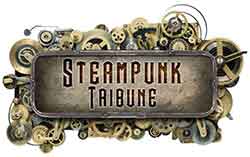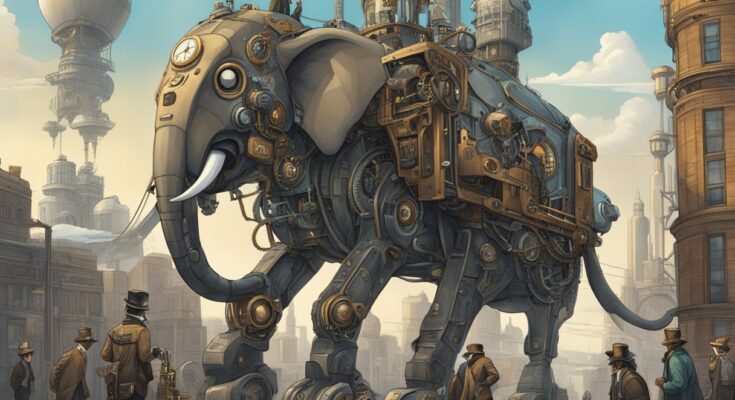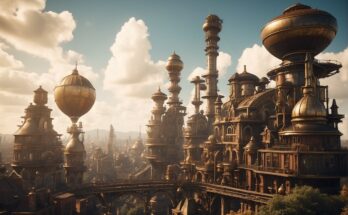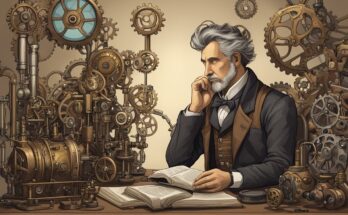Steampunk, a subgenre of science fiction and fantasy, is notable for its anachronistic fusion of Victorian-era aesthetics and punk-rock rebellion paired with steam-powered machinery. It extends beyond mere human fashion and literature, seeping into the realm of animals. In steampunk-themed works, animals are often reimagined as automatons or mechanical beings, blurring the line between the organic and the industrial. These creations, made from gears, copper, and brass, breathe life into a whimsical alternate reality where creativity knows no bounds.

The representation of animals in the world of steampunk is not merely decorative. It serves a larger narrative purpose, often embodying the themes of innovation and the intersection of man, machine, and nature. Inventors are envisioned as creators of biomechanical companions, some of which take on roles similar to pets, while others serve more functional purposes. These steampunk animals are frequently equipped with intricate clockwork mechanisms and are powered by steam, symbolizing the era’s fascination with industrial advancement and mechanization.
Artists and storytellers alike contribute to the lore of steampunk animals with their detailed renderings and narratives that give these constructs a semblance of life. Whether depicted as majestic mechanical beasts or as whimsical contraptions with distinct personalities, these animals are a testament to the creative spirit inherent in the steampunk genre. As viewers engage with these depictions, they are invited to appreciate the harmonious melding of the organic world with the fruits of human ingenuity.
Origins of Steampunk

In examining the origins of steampunk, it’s important to recognize its dual roots in historical influences and its portrayal in modern media.
Historical Roots
Steampunk has its origins in the 19th-century Victorian era, a period often considered the height of industrial steam-powered technology. The genre combines the aesthetic and technological aspects of this era with elements of science fiction and fantasy. Its narratives frequently involve alternative histories where steam power has maintained prominence into the present or future, thereby shaping society in distinct ways. Literary works by authors like H.G. Wells and Jules Verne are often cited as precursors to the steampunk movement, imagining worlds of advanced machines and otherworldly adventures that were fueled by steam and the mechanics of their age.
Steampunk in Modern Media
The term “steampunk” itself was not coined until the late 20th century, when it emerged to describe a burgeoning subgenre of science fiction that looked to the past’s steam-powered technology for its futuristic visions. Steampunk aesthetics have influenced numerous works across various media platforms, with films such as “The League of Extraordinary Gentlemen” and “Wild Wild West” popularizing the visual style characterized by gears, brass, and goggles. In literature, the movement has been advanced by books like William Gibson and Bruce Sterling’s “The Difference Engine,” which solidifies steampunk as a genre that reshapes perceptions of the past, present, and future.
- In Film & TV:
- “The League of Extraordinary Gentlemen”
- “Wild Wild West”
- In Literature:
- “The Difference Engine” by William Gibson and Bruce Sterling
- Works of H.G. Wells and Jules Verne
Not only does steampunk draw upon technology and aesthetics from the bygone steam era, but it also reflects on societal norms and industrial advancements from a contemporary viewpoint, often commenting on and critiquing the trajectories of modern society.
Steampunk Animals in Art
Steampunk art transforms the ordinary into the mechanically extraordinary. Notably, animal sculptures crafted from metal and recycled materials exemplify this genre, bringing an industrial yet whimsical flair to life.
Igor Verniy and His Creations
Igor Verniy, a talented Russian artist, excels in crafting steampunk animal sculptures. His work is characterized by:
- Materials: Utilizes recycled metals, including car parts and other reclaimed items.
- Detail: Achieves intricate articulation, allowing for lifelike movement in his creations.
Each of Verniy’s sculptures showcases not only his skill as an artist but also his commitment to sustainability. By repurposing discarded materials, Verniy’s pieces carry a message of revitalization.
Hasan Novrozi’s Contributions
Hasan Novrozi, another prominent steampunk artist, has also made notable contributions to the genre with his steampunk animal sculptures. He is known for:
- Techniques: Melding metal with artistic expression to create dynamic and robust animal figures.
- Design: Incorporating a diverse array of materials, Novrozi’s sculptures stand out for their size and detailed execution.
Novrozi, much like Verniy, breathes new life into salvaged materials, with each piece emanating a distinct personality and presence within the realm of steampunk art.
Steampunk Aesthetic

The steampunk aesthetic merges Victorian-era design with a mechanical, futuristic imagination. This section explores the stylistic elements that define steampunk and its use of color and fantasy aspects, especially when portrayed through animals in art and literature.
Defining Steampunk Style
Steampunk style is marked by a distinct blend of old-world elegance and mechanized innovation. It is characterized by:
- Victorian-era fashion: Corsets, top hats, and tailored suits are staples.
- Industrial machinery: Gears, levers, and steam-powered machinery are prominently featured in designs.
- Brass and copper finishes: These metals are often used for their historical connotation and sheen.
Animals in a steampunk context are frequently depicted with mechanical enhancements or as part of an alternative reality where steam technology is prevalent.
Color and Fantasy Elements
Color in steampunk is often subdued but plays a critical role. The palette generally includes:
| Base Colors | Accent Colors |
|---|---|
| Browns | Brass |
| Greys | Copper |
| Blacks | Ruby Red |
Fantasy elements manifest through mythical creatures and inventive tweaks to everyday animals. Steampunk imbues animals with fantastical functions while preserving a believable visual coherence. For instance, a mechanical dragonfly might be designed with intricate gears for wings yet colored in muted greens and browns to maintain a Victorian semblance.
Creating Steampunk Animals
Steampunk artistry breathes fantastical life into ordinary scrap materials, transforming them into intricate animal representations that merge the organic with the mechanical.
Crafting from Scrap Metal
The process begins with scrap metal, often sourced from discarded machinery and electronics, which provides an environmentally friendly option for artists. Artisans meticulously select pieces to mirror the anatomical features of the desired creature. When constructing a cat, for instance, smaller, more delicate pieces of metal might be used to form its sleek frame and facial features, while bulkier segments could represent a dragon‘s scales or a pegasus’ muscular build. For creatures like ants or other insects, artists frequently utilize slender wiring and tiny gears, which allow for replication of intricate limb structures.
| Animal | Scrap Utilization | Feature Representation |
|---|---|---|
| Bird | Light metals, watch parts | Wings and beaks |
| Fish | Curved metal, shimmering steel | Scales and fins |
| Bee | Brass, small cogs | Thorax, wings |
Artists ensure that pieces not only fit the visual aesthetic but also maintain structural integrity, often using techniques such as welding and soldering to bring the fantastical animal forms to life.
Articulated Steampunk Designs
Articulation adds dynamic motion to steampunk animals, creating a more lifelike and interactive piece. For instance, a steampunk bird may have wings engineered to flap, or an ant‘s legs might be designed to mimic scurrying. These designs employ an array of hinges and joints, with an emphasis on the movement that characterizes living animals.
- Articulated Wings: These incorporate hinges and levers to simulate flight.
- Jointed Limbs: Cats or dragons can be posed in various stances through ball and socket joints.
- Flexible Tails and Necks: A pegasus might feature a bendable tail, offering diverse expressive positions.
Utilizing recycled materials not only reduces waste but also adds a unique history to each piece, as parts from vintage clocks or old cars give a glimpse into the past while showcasing a new form of artistic expression.
Steampunk Animal Imagery

Steampunk animal imagery captures the essence of Victorian era aesthetics fused with futuristic technology, predominantly portrayed through various forms of visual media.
Photographs and Vectors
Photographs of steampunk animals are often a blend of royalty-free stock photos manipulated to incorporate mechanical elements. These photos are then transformed into detailed vectors that can be scaled without loss of quality, making them suitable for a variety of media formats. One finds these vectors used commonly in graphic design, where they serve as intricate representations of animals reimagined with gears, goggles, and metallic embellishments.
- Stock Photos: Often used as a base for creating steampunk artwork.
- Vectors: Provide scalable and editable options for designers.
Illustrations and 3D Models
Illustrations of steampunk animals are usually intricate drawings that depict a hybrid of organic and mechanical components. Artists might use pencil, ink, or digital tools to create images that can range from whimsical to eerily lifelike portrayals of mechanical animals. Meanwhile, 3D models of these creatures take the concept a step further by creating a tangible, highly detailed representation that can be viewed and manipulated from every angle, offering a more immersive experience.
- Drawings: Traditional or digital sketches highlighting steampunk features.
- 3D Models: Digital constructs that can be rotated and viewed in virtual environments.
The Marketplace
In discussing the marketplace for steampunk animals, it’s important to recognize the two facets that drive it: the sale of handcrafted items and the digital platforms that connect creators with collectors.
Selling Steampunk Creations
Artists and makers who specialize in the creation of steampunk animals find a niche audience eager to purchase their works. These creations, often intricate and unique, are sold in various forms, including sculptures, jewelry, and home decor. A prominent platform for such transactions is Etsy, where creators set up personal storefronts to showcase and sell their handcrafted items. On Etsy, customers can explore a rich assortment of steampunk animals, interacting directly with the artists for custom orders or purchasing pre-made pieces.
Key Points:
- Etsy serves as a major marketplace for handmade steampunk animal creations.
- Artists offer a varied collection, ensuring uniqueness in each piece.
Platforms for Artists and Collectors
Aside from Etsy, social media platforms like Facebook play a crucial role in the steampunk animal marketplace. These platforms allow artists to display their creations, share stories behind their work, and engage with a community of enthusiasts. Facebook groups dedicated to steampunk art create spaces for collectors to discover new artists, showcase their collections, and participate in the culture surrounding steampunk.
Effective Platforms:
- Etsy
- Preferred for transactions
- Showcases detailed listings with customer reviews
- Facebook
- Enables community engagement
- Promotes discovery of new work and artists
Overall, these platforms help in the networking and selling processes, enriching the steampunk animal marketplace.
Cultural and Educational Aspects
Steampunk animals have fostered an innovative intersection between artistic expression and scientific education. This genre marries Victorian-era aesthetics with futuristic possibilities, deeply influencing both cultural and educational spheres.
Steampunk in Natural Science
Steampunk, with its anachronistic yet futuristic visions, has made a notable impact on natural science education. By reimagining fauna with mechanical elements, it prompts learners to explore the anatomy and physiology of animals in a new light. Educators often tap into the steampunk aesthetic to create engaging materials that spark interest in biological concepts, leading to a deeper appreciation for the intricacies of the natural world.
- Visual Learning:
- Illustrations: Detailed steampunk diagrams of animals encourage visual learning among students, illustrating how organic and mechanical systems might interrelate.
- Models: Creating physical or digital steampunk-inspired animal models helps in understanding the complexities of biological machinery.
- Critical Thinking:
- Students contrast imagined steampunk mechanisms with actual biological functions, enhancing critical thinking and scientific inquiry.
Influence on Robotics and Biology
The fusion of living organisms with mechanical parts in steampunk art has sparked curiosity and innovation in the fields of robotics and biology. It is particularly influential in the development of biomimicry and robotic design, where the replication of biological movements and systems in machines is a major goal.
- Biomimicry: Steampunk animals serve as creative blueprints for exploring how to replicate organic processes in robots.
- Example: Use of hydraulic mechanisms inspired by the musculoskeletal structures of steampunk creatures.
- Talent Cultivation:
- Education Programs: Programs infusing steampunk themes in robotics and biology studies cultivate talent by attracting a diverse range of students who might not otherwise be interested in these fields.
- Career Inspiration: Exposure to steampunk-inspired robotics and biology can guide students towards innovative career paths in engineering, design, and environmental sciences.




